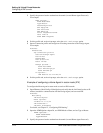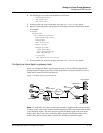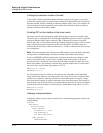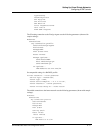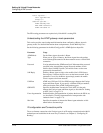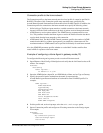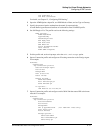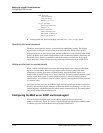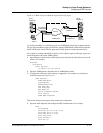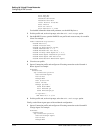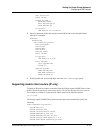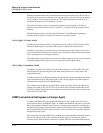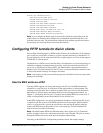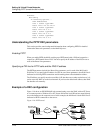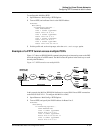
11-22 MAX 6000/3000 Network Configuration Guide
Setting Up Virtual Private Networks
Configuring ATMP tunnels
IPX options...
IPX RIP=None
IPX SAP=Both
NetWare t/o=30
Telco options...
Call Type=Nailed
Group=1,2
Session options...
ATMP Gateway=Yes
MAX ATMP Tunnels=0
ATMP RIP=Send-v2
8 Exit the profile and, at the exit prompt, select the exit and accept option.
Specifying the tunnel password
The Home Agent typically requests a password before establishing a tunnel. The Foreign
Agent returns an encrypted version of the password found in the mobile client’s profile.
If the password sent by the Foreign Agent matches the Password value specified in the ATMP
profile, the Home Agent returns a RegisterReply with a number that identifies the tunnel, and
the mobile client’s tunnel is established. If the password does not match, the Home Agent
rejects the tunnel, and the Foreign Agent logs a message and disconnects the mobile client.
Setting an idle timer for unused tunnels
When a mobile client disconnects normally, the Foreign Agent sends a request to the Home
Agent to close the tunnel. When a Foreign Agent restarts, however, tunnels that were
established to a Home Agent are not cleared normally, because the Home Agent is not
informed that the mobile clients are no longer connected. The unused tunnels continue to hold
memory on the Home Agent. To enable the Home Agent to reclaim the memory held by
unused tunnels, set an inactivity timer on a Home Agent by changing the Idle Limit parameter
to a nonzero value.
The inactivity timer runs only on the Home Agent side and specifies the number of minutes (1
to 65535) that the Home Agent maintains an idle tunnel before disconnecting it. A value of 0
disables the timer, which means that idle tunnels remain connected forever. The setting affects
only tunnels created after the timer was set.
Configuring the MAX as an ATMP multimode agent
You can configure the MAX to act as both a Home Agent and Foreign Agent on a
tunnel-by-tunnel basis. Figure 11-5 shows a sample network topology that has a MAX acting
as a Home Agent for Network B and a Foreign Agent for Network A.



